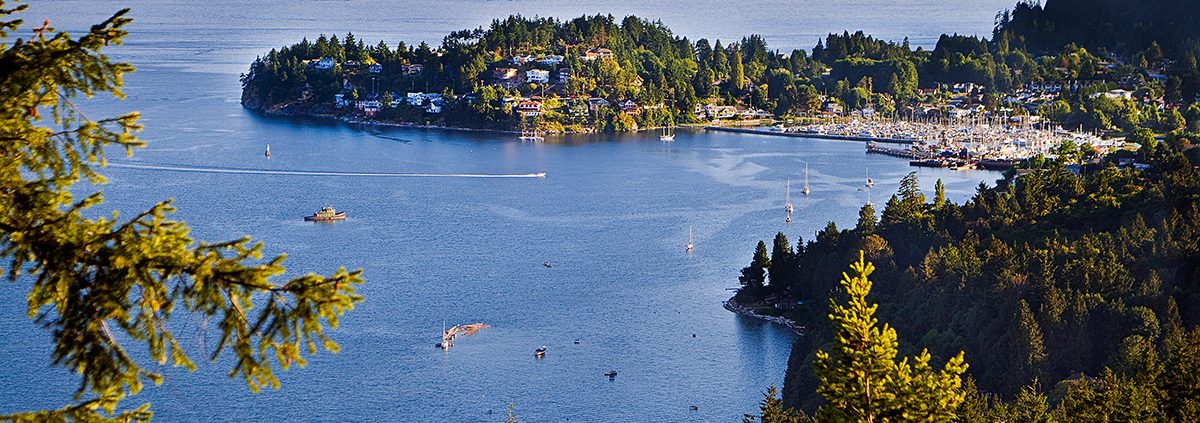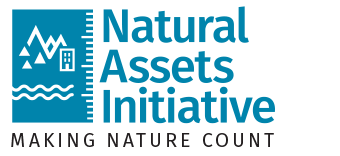Making nature visible in decision-making: solving Provincial Barriers to Natural Asset Infrastructure
In the face of climate change, support for Nature-Based Solutions (NBS) continues to grow. However, the extent to which its full potential can be realized depends on many issues under provincial jurisdiction.
With this in mind, what’s preventing the adoption of natural asset infrastructure in Canada, and what can be done about it? Last year, the Province of British Columbia engaged the Municipal Natural Assets Initiative to answer that question. The Province sought to better understand the regulatory and policy issues for which they are responsible for that interfere with planning, designing, and developing NBS — specifically natural asset infrastructure — across BC, and how they can overcome them.
A new MNAI report provides the results of that work. While its focus is on BC, MNAI used a framework that is useful across Canada and the report sheds light on universal challenges and solutions that other provinces and local governments can apply.
Why push for natural asset infrastructure?
Achieving net-zero targets by 2050 requires healthy, connected and biodiverse ecosystems. Healthy ecosystems also reduce risks to human health from flooding and extreme heat events and provide vital infrastructure services such as drinking water filtration. When compared to engineered infrastructure, hybrid grey-green or fully natural infrastructure can offer additional co-benefits through reduced carbon emissions, active transport, recreational opportunities and improved mental health. Realizing these outcomes requires, amongst other things, that NBS must be deployed at scale, not as disconnected pilots.
Healthy natural assets can also mean immediate infrastructure service benefits. Right now, communities are facing growing risks from hazards such as flash floods, heat domes, forest fires, and rising sea levels. At the same time, the Federation of Canadian Municipalities indicates that ⅓ of infrastructure is already in very poor to only fair condition. Communities simply do not have the resources to simply build their way out of this urgent infrastructure crisis in the face of a changing climate. While many challenges lie at the provincial level, about 60% of public infrastructure is owned by local governments. With these barriers reduced, or even removed, more communities can take charge of managing their natural assets and fulfill responsibilities to provide core services such as water filtration, stormwater management and protection from flooding in adaptable, climate-resilient, and cost-effective ways.
Current barriers
Across Canada and beyond, barriers to natural infrastructure (and their solutions) generally fall into one of five categories:
- Institutional and Governance (e.g., lack of leadership, competing priorities)
- Socio-Cultural (e.g., cultural and societal perceptions of “green infrastructure”)
- Knowledge (e.g., lack of technical guidance)
- Technical and Biophysical (e.g., design or construction challenges)
- Funding and Markets (e.g., lack of funds)
MNAI’s research in BC shows that, overwhelmingly, the main barrier to scaling up natural asset infrastructure in the Province of BC falls into the first category: the key issue is the lack of any policy direction suggesting that any entity should consider and value nature for the broad range of infrastructure and non-infrastructure services that it provides. The absence of policy drivers, combined with a dominant worldview that views nature as property, means that nature typically gets excluded from decision-making.
Emphasis on “traditional” approaches to infrastructure can make natural asset infrastructure seem like a more complex, or even riskier, approach than the evidence actually warrants. As a result, few local governments are going to do more than the bare minimum, unless actions are taken to directly support NBS and engage with progressive, research-based approaches.
“People are dealing with climate, resilience, nature, as separate issues when they are one, and thus doing three times the work”.
– Observation from a study participant interviewed by MNAI.
An equally important barrier is the lack of any policy which recognizes that nature does not follow political boundaries. Managing ecosystems requires coordinated efforts that follow those tracks of rivers, slopes of forests, and patterns of vegetation that take no notice of political boundaries. Collaborating up-river and down-stream means that neighbours used to making solo decisions need to develop new ways to work in collaboration.
A range of specific legislations or regulations in the province that are outlined in the report amplify these primary barriers. Many rules for managing water, for example, aim to support grey infrastructure solutions to deal with too much or too little water, to drain wastewater, and protect individual private properties. These same rules are not necessarily suited to manage natural asset infrastructure and some of their requirements will need to change.
Solutions for BC and beyond
Fortunately, there is a range of opportunities to reduce barriers and increase enablers for natural asset infrastructure (for the detailed version, see page 34 in the Barriers and Opportunities report). The first step would be clear direction from the Province of BC — and likely all provincial governments — that nature must be considered in decision-making and planning in terms of the full range of infrastructure and non-infrastructure services it provides, and that natural asset infrastructure can be a sustainable and cost-effective way to both deliver services to municipalities and increase their climate resilience.
It is clear from participants in the study that the Province of BC cannot rely on the generally enabling language of existing policies but needs strong and consistent “affirmative direction” of natural asset infrastructure at all levels. A great start would simply be to issue and interpretation of the Local Government Act to clarify that “public assets” include natural assets and that “services” include those from nature.
Another example of legislative change the province should take into consideration is amending Division 19 of the Local Government Act to make it explicitly enable the application of development cost charges (DCCs) to natural infrastructure.
Further policy solutions would be to make changes to programs, especially those providing funding. Programs can explicitly request that applicants evaluate natural infrastructure alongside grey options, to choose what works best for them. This simple change encourages people seeking solutions to consider NI and all the co-benefits when they consider their next big investment. Requirements or support to inventory natural assets and standardize valuation methods will help direct investments to nature.
As mentioned, some barriers are driven by an unconscious leaning towards traditional norms. Evidence demonstrates the need for the province to forego traditional Ministry-by-Ministry approaches, which tend to parse watershed areas along smaller geographic or accountability lines, and instead conceptualize watershed as an integrated whole. British Columbia’s emerging Watershed Security Strategy and Fund could be a way to introduce this solution.

Enabling cross-boundary management of watersheds is necessary to achieve the full potential of natural asset infrastructure, otherwise local governments are limited. One case of how this could affect a town’s prosperity this comes from the Town of Gibsons, BC.
- Gibsons was the first local government in Canada to put natural assets at the core of its infrastructure system strategy, planning and operations through a fusion of asset management, ecological accounting, and ecosystem services methods. In 2014, the Town declared nature to be its most valuable asset.
- Currently, governance systems are fragmented and overlapping. Different entities in the region where Gibsons is located are at different stages in terms of planning, monitoring, and implementation that affect natural assets. The Province of BC has several Ministries with responsibilities for the Aquifer, each with a different mandate.
- Because of this separation, there is no plan to ensure the sustainability of the larger ecosystem which Gibsons is a part of and positively contributing to, despite the looming threats of climate change.
- On its current trajectory, Gibsons will continue to make outstanding progress in natural asset management, but the outcomes will always fall short because they will end at its borders.
Other provinces, take note
The barriers identified in BC may express themselves differently in other provinces, but make no mistake, the broad categories are widely applicable, and every part of the country faces similar hurdles. In no other province in Canada is there likely to be any strong policy requiring anyone to take full account of the infrastructure and non-infrastructure services that nature provides. The one possible exception is Ontario’s O. Reg 588.17 .
Fortunately, solutions abound. A great starting point would be for every province to analyze, as BC has done, the policy and regulatory barriers to natural asset infrastructure, and to chart a rapid course to addressing them.


